In this article, you will learn about converting PDF files for use with Gig Performer ChordPro.
Background
.
The ChordPro/Lyric window in Gig Performer does not yet have built-in support for viewing PDF files. However, since it does support images, a workaround is to convert PDF files into image pages that can be used by our viewer. However, it is time consuming to manage manual conversion of a PDF file into image files as well as creating the ChordPro directives needed to make them usable.
Solution
.
There are several free (and indeed open source) command line utilities that can be used to convert PDF files into collections of image files. We decided to create a wrapper around one of these utilities to automate the creation of the required image files and to automatically create the ChordPro directive to insert into your ChordPro viewer. It is called PDFToGPChordPro.
We do have to note that PDFToGPChordPro comes with absolutely no warranties. It probably will not delete all your files nor damage anything on your computer but if you manage to mess something up, we cannot provide any support or accept any responsibility. Use it solely at your own risk.
Steps – Part 1 – Download and install the PDFToGPChordPro utility from the Gig Performer Website
.
1. Download PDFToGPChordPro Mac version or PDFToGPChordPro Windows as desired.
2. Open the compressed zip file and put the application anywhere you like. By convention, Mac user may prefer to put it in their Applications folder while Windows users may prefer to put it in their C:\Program Files\ directory.
3. Double-click (or otherwise open) the application. You should see a window that looks like this (obviously, the title bar will look slightly different if you are running on Windows):
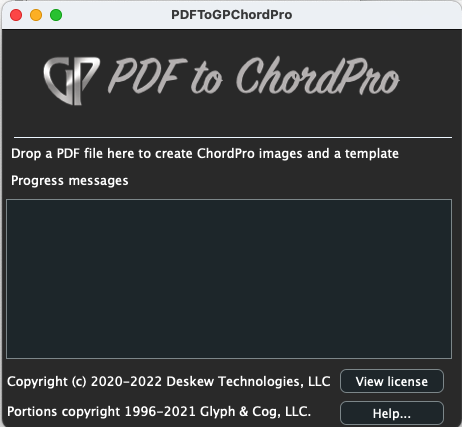
Now you’re ready to start converting your PDF files.
Steps – Part 2 – Creating your image files from your PDF
.
1. Drag a PDF into the application window.
2. Wait a while!
3. Eventually you’ll see the following message:
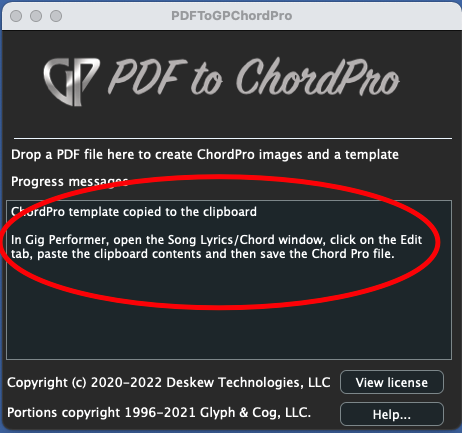
4. Now open the Song Lyrics/Chords… window in Gig Performer:
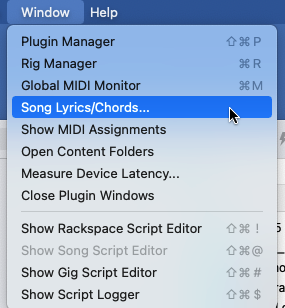
5. Click on the Edit tab:
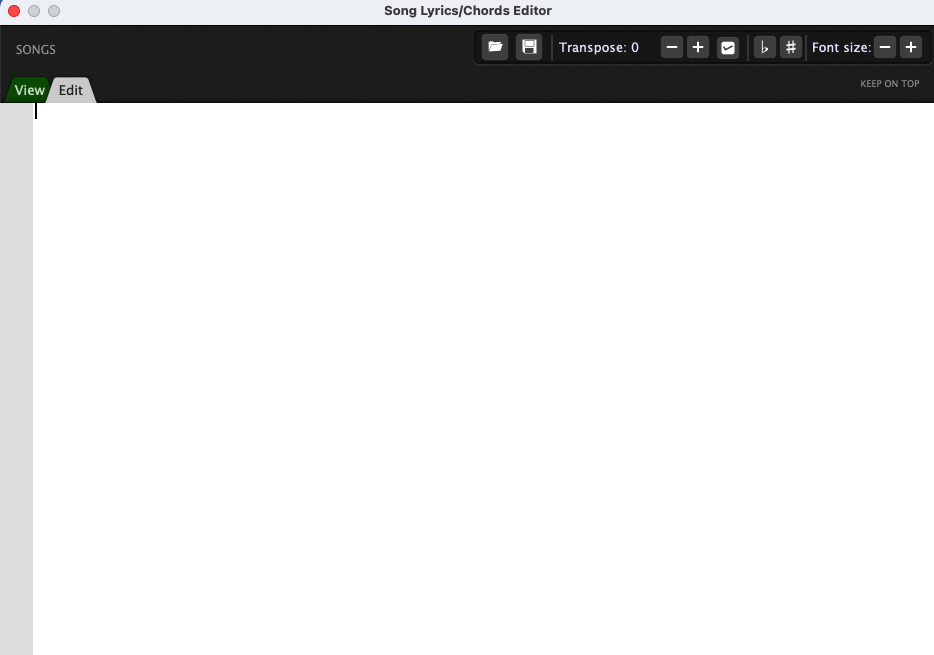
6. Now just paste the contents of the clipboard directly into this window (Cmd+V on Mac, Ctrl+V on Windows). Your Window will look like this (obviously, with different file names):
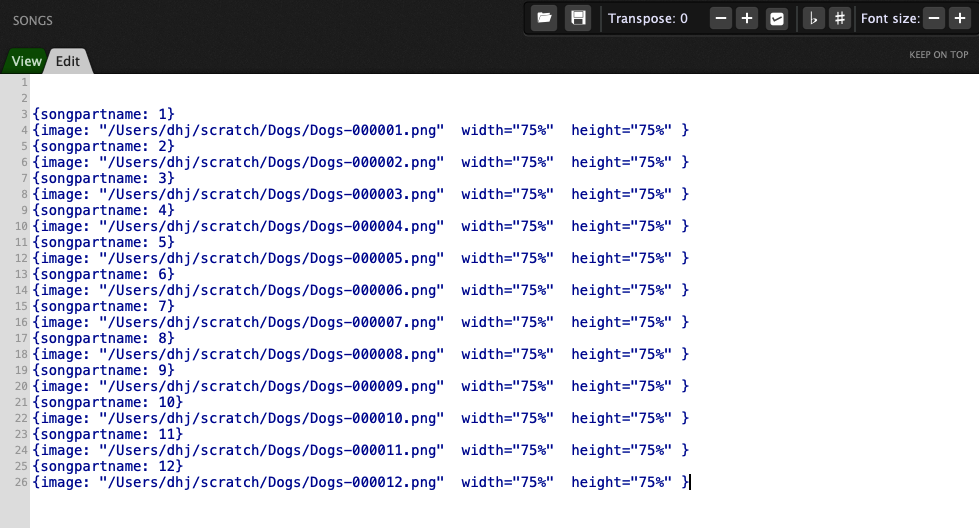
7. Click on the View tab to see your sheet music:
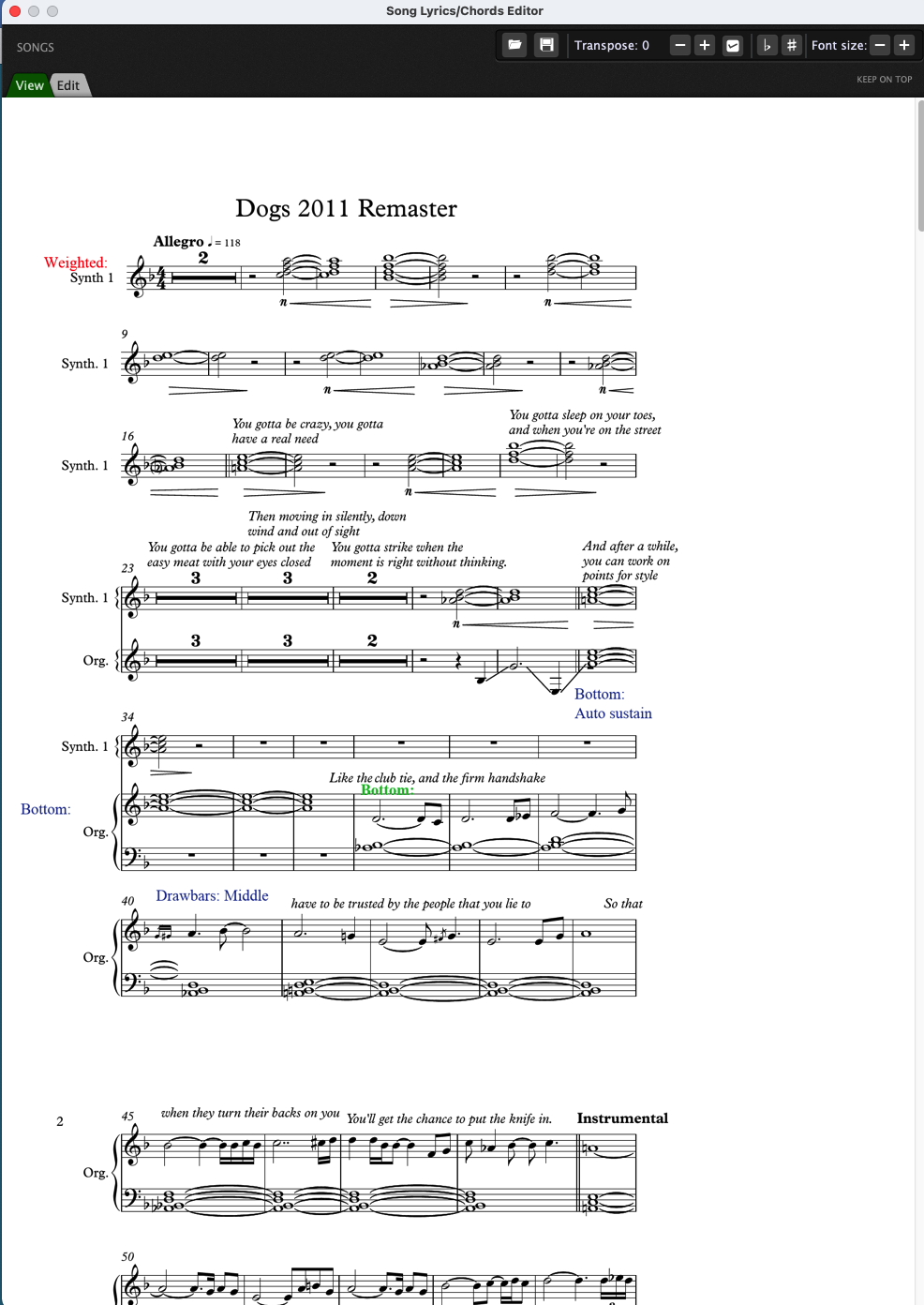
8. Remember to save the newly created ChordPro as usual.
Steps – Part 3 – Tweaking the results (optional)
.
If you look closely at the ChordPro directives that were generated, you’ll notice that before each image directive, there is a songpartname directive, with increasing numbers. The songpartname is new in Gig Performer 4 (another reason to upgrade, see what’s new!) and when you are switching from one song part to another, the lyrics view will scroll automatically so you see the sheet music associated with the particular song part. Unless you want to name your song parts 1,2,3… you will want to change the entries for each songpartname directive in the ChordPro text file to match whatever song part names you have used in your song.
You can of course add or insert other ChordPro directives as needed.
Conclusion
.
PDFToGPChordPro is a useful helper tool that will expedite your creation of ChordPro files if you are starting from PDFs.
As mentioned earlier, this tool is not officially supported but you are welcome to discuss it on our community forums.
Appendix- the XpdfReader
.
If you are interested, you can download the underlying PDF to Image conversion tool from the Xpdf website.
.
Related topics:
– How to use ChordPro files in Gig Performer?






